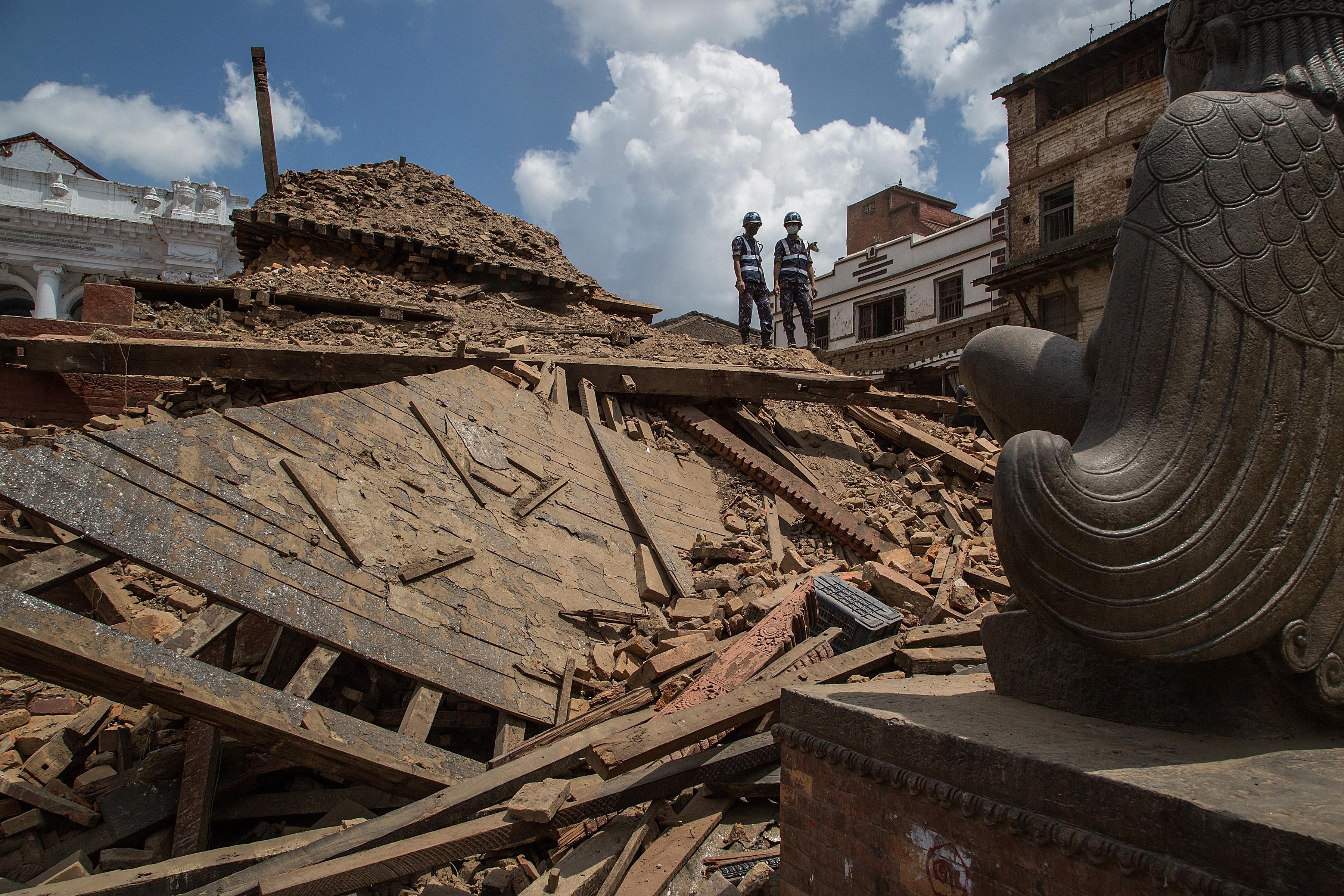The human toll of the massive earthquake that hit Nepal over the weekend is still being tallied, but the longterm economic damage could be incalculable. The U.S. Geological survey believes the economic loss could possibly exceed Nepal’s GDP, though more likely it will be closer to a still devastating 34 percent.
Nepal was already one of the poorest countries in Asia before the quake, with a GDP per capita lower than Sudan and Yemen. Its economy grew at only about 4 percent per year over the past few years (compare that to 7 percent for neighboring India) and unemployment is around 40 percent with much of the population involved in subsistence agriculture. The quake will likely set back Nepal’s already ambitious goal of moving from a “least developed country” to a “developing country” by 2022.
Nepal has been recovering from a 10-year civil war between the government and Maoists, which ended in 2006. Even after the fighting ended, the government remained in deadlock, with the Maoists and their former adversaries fighting over the drafting of a new constitution and the reintegration of former fighters into Nepalese society. The political stalemate finally seemed to be ending in early 2014, with the election of a prime minister after years of caretaker governments, but earlier this year, disputes over the constitution set off riots in the streets and brawls on the floor of parliament. The deadlock has kept Nepal from making the kind of infrastructure investments that might have kick-started economic growth, not to mention making the country more prepared for a disaster like the one we’ve just seen.
Nepal’s had other natural disaster challenges: It’s still reeling from devastating floods in 2014 and 2012. These floods, likely thanks to climate change, have been getting more severe in a country with some of the most water-rich mountains in the world, and the government recently estimated their annual impact at around $232 million.
One reliable source of income for the popular backpacking and climbing destination was tourism. There were already concerns about that sector after last year’s avalanche on Mount Everest and the resulting strike by Sherpa guides. With at least 18 people killed by avalanches in this most recent quake, there are now calls to close down the mountain to climbers entirely.
That seems unlikely. With tourism accounting for about 8 percent of its economy and employing 7 percent of the workforce, Nepal needs free-spending mountaineers more than ever, particularly after the damage done to some of the country’s best known cultural landmarks, including the Dharahara tower and Durbar Square in Kathmandu, and the 16h century Vatsala Durga temple. Four of the country’s seven UNESCO heritage sites sustained some damage in the quake. The editor of the Nepali Times told the BBC that the earthquake was “culturally speaking an incalculable loss.”
One small but important advantage Nepal has is that it’s on fairly good terms with its neighbors, none of whom are on particularly good terms with each other. India, China, and nearby Pakistan have all been competing for influence in the landlocked nation, and were the first to respond with aid after the quake. However, some of those countries’ plans for longterm investment in the water-rich nation, including a $1.6 billion Chinese hydroelectric dam project, could be put on hold now.
The IMF is currently assessing Nepal’s aid needs amid calls on the group to help resolve the country’s billions in international debts. Other countries will likely make major aid commitments as well, which in a country as small as Nepal, could have an outsize impact.
If Nepal can take advantage of the massive outpouring of international aid to leverage the (self-interested) support of its competing neighbors, and finally make much needed investments in infrastructure as it rebuilds, there’s a chance for Nepal to emerge from this tragedy stronger and more disaster-proof than before. Of course, that would require the country’s squabbling and divided political leaders to finally get on the same page.
